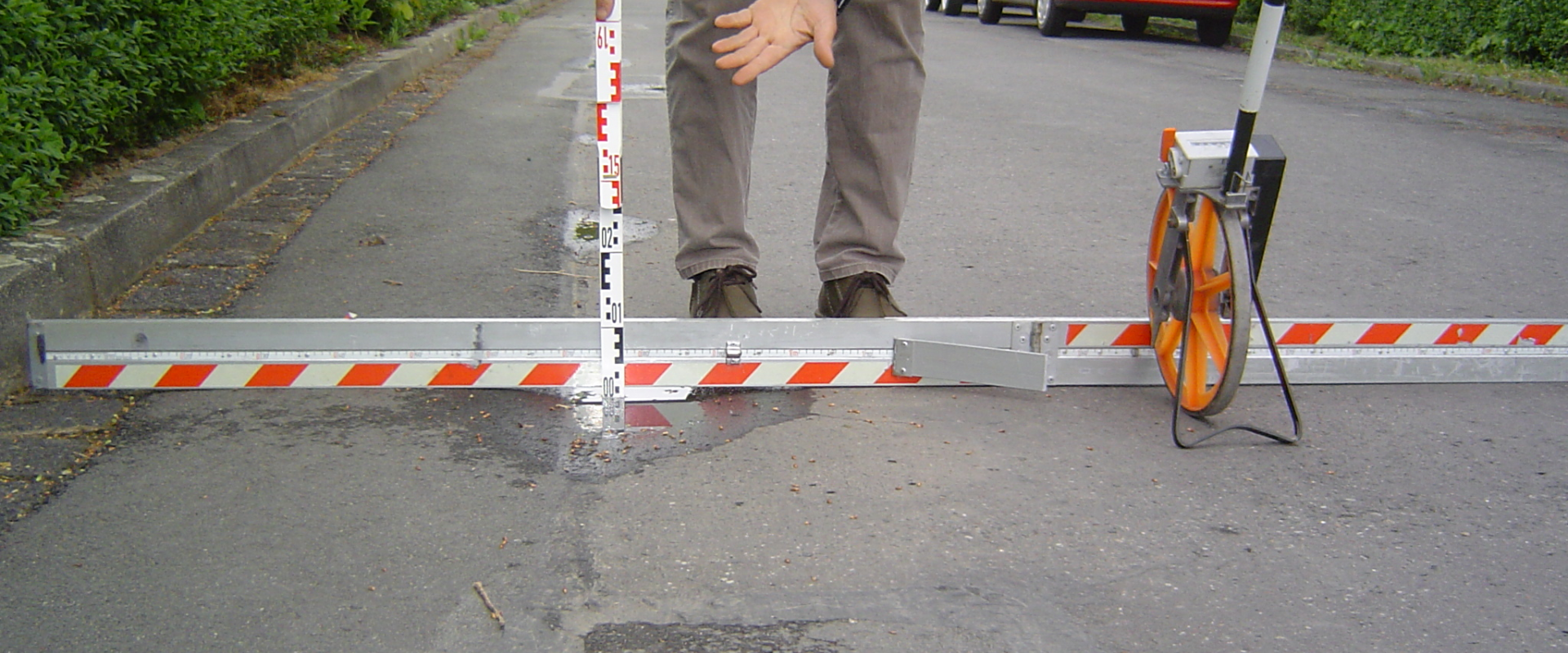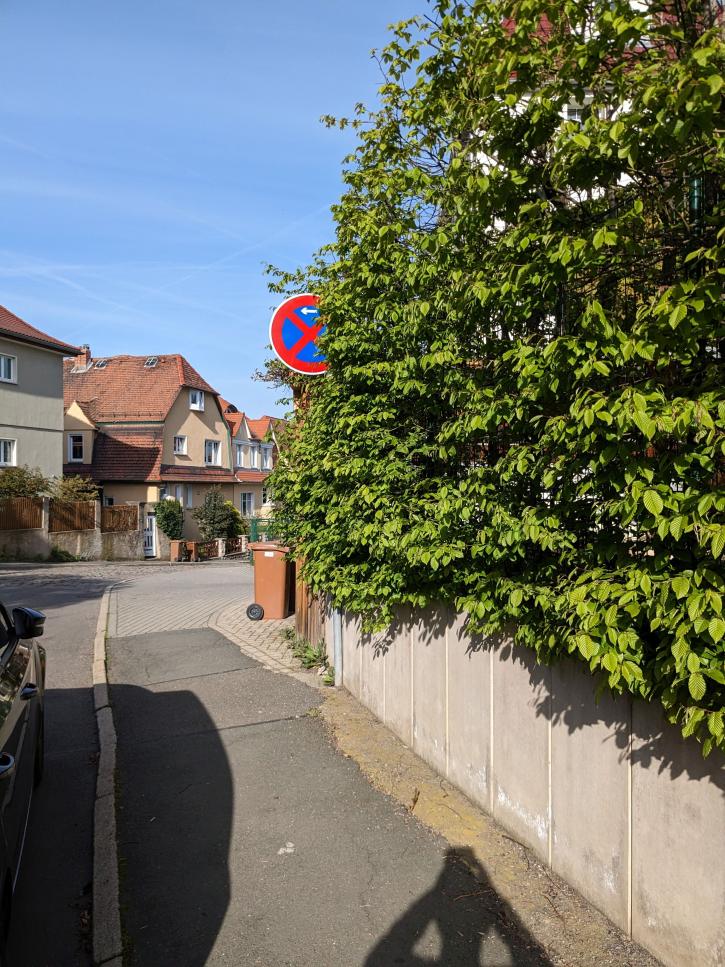
search the site now

Roads are the lifelines of our modern society, which in Jena is characterized by industry and agriculture.
As the lower road construction authority, we deal with everything that belongs to the public road, including Roadways, footpaths and cycle paths, verges, ditches, road drains, road accessories (e.g. traffic and street name signs, bicycle racks, bollards and barrier posts).
The public roads in the city have a length of almost 400 km. The employees of the road administration team regularly inspect the carriageways, footpaths and cycle paths, road drainage facilities, flood ditches within built-up areas and the traffic and street name signs. If necessary, repairs to the aforementioned facilities are arranged.

Traffic safety tries to protect all road users from hazards in the best possible way - insofar as they use the road for its intended purpose. As the owner, we ensure that no one is harmed and take all necessary precautions to do so.
We are responsible for the following areas:

Private greenery that grows into public traffic areas
Hedges, bushes, branches and twigs must not protrude into the "clearance profile" of the road/pavement, as this impairs the safety and ease of traffic. According to the Thuringian Road Act, the clearance must be kept free, i.e. 4.50 m above carriageways and 2.50 m above footpaths and cycle paths, with a side safety clearance of 50 cm.
The mistake often begins at the planting stage, as the spread of the vegetation is underestimated. The Thuringian Neighboring Rights Act serves not only as a legal standard but also as a guide with regard to varieties and boundary distances!
Unfortunately, when plantings are too close to the boundary and the growth is too lush, the only solution is often to "cut back" or grub them up. According to the Federal Nature Conservation Act (BNatSchG), this is permitted between October 1 and February 28/29. From March 1 to September 30, only careful shaping and maintenance pruning to remove the growth of the plants and maintain the health of the trees may be carried out.
Keeping traffic signs and clearance profiles on public roads and paths clear does not fall under the prohibition of the BNatSchG. Rather, they must be carried out regularly by residents and owners of hedges etc.
Road supervision staff monitor compliance with the clearance profile. In the event of complaints or the discovery of deficits, they will inform the affected residents of their obligations by means of a litter note.
We therefore ask all property owners, property managers, allotment gardeners, etc. to do the same: Please already pay attention to the location in connection with the plant variety to the boundary distance when planting! Keep your greenery within the appropriate dimensions by pruning regularly. This will also help you avoid administrative costs and inconvenience.
The naming of streets is attributed to the right of order and development. The purpose of street naming is to enable and facilitate the location of residential buildings, businesses and public buildings in dealings between citizens and between citizens and authorities.
The initial allocation of names for streets, paths and squares is decided and publicly announced by the City of Jena's Culture Committee, which is appointed by the City Council.
Official street names with the assigned house numbers are registered in the street directory of the City of Jena.
Dedication in the sense of road and path law is a formal administrative act (general ruling) that declares a road traffic area to be a public matter. In Thuringia, dedication is regulated in Section 6 of the Thuringian Roads Act. With the dedication of a road, public use is opened up to the general public, the type of use and purpose as well as the body responsible for the construction and maintenance of the road are determined.
Dedication is decreed by the responsible road construction authority and announced publicly.
It establishes rights (e.g. traffic development) and obligations (e.g. residents' obligations) of the residents as well as the levying of road improvement contributions.
Confiscation is the general order by which a dedicated road loses its status as a public road, e.g. loss of all traffic significance of the road or for overriding reasons of public interest.
Partial confiscation is the general ruling by which the dedication of a road is subsequently restricted to certain types of use, purposes of use or groups of users (e.g. pedestrian zones, load restrictions for vehicles).
Permission under civil law regulates (in accordance with Section 23 ThürStrG) the granting of rights to use the property on roads if these do not permanently impair public use. This applies in particular to public supply and disposal lines.
Once a building application has been submitted to the Building Regulations Office (Building Regulations Department), we, as the lower road construction authority, review and comment on the application as part of the public interest participation process. This involves checking the traffic-related development (residents of a public road), whether there are any restrictions on dedication and whether changes still need to be made to access roads.
The aim of these measures is to maintain and improve the substance and serviceability of the road network.
By developing maintenance strategies, road maintenance is to be planned with foresight and continuously optimized from an economic, business and technical perspective. Taking into account the efficient and effective use of the available financial resources, a maintenance program is developed that guarantees and extends the useful life of the roads in the medium to long term.
As part of the utility companies' project planning (line relocations), the possibility of participation is regularly examined in order to find a suitable solution to the general satisfaction of all parties by exploiting synergies. For example, utility companies only have an obligation to restore their trench when laying pipes. However, we try to renew the entire road surface/walkway width in this process in order to reduce recurring construction measures and thus stress for residents.